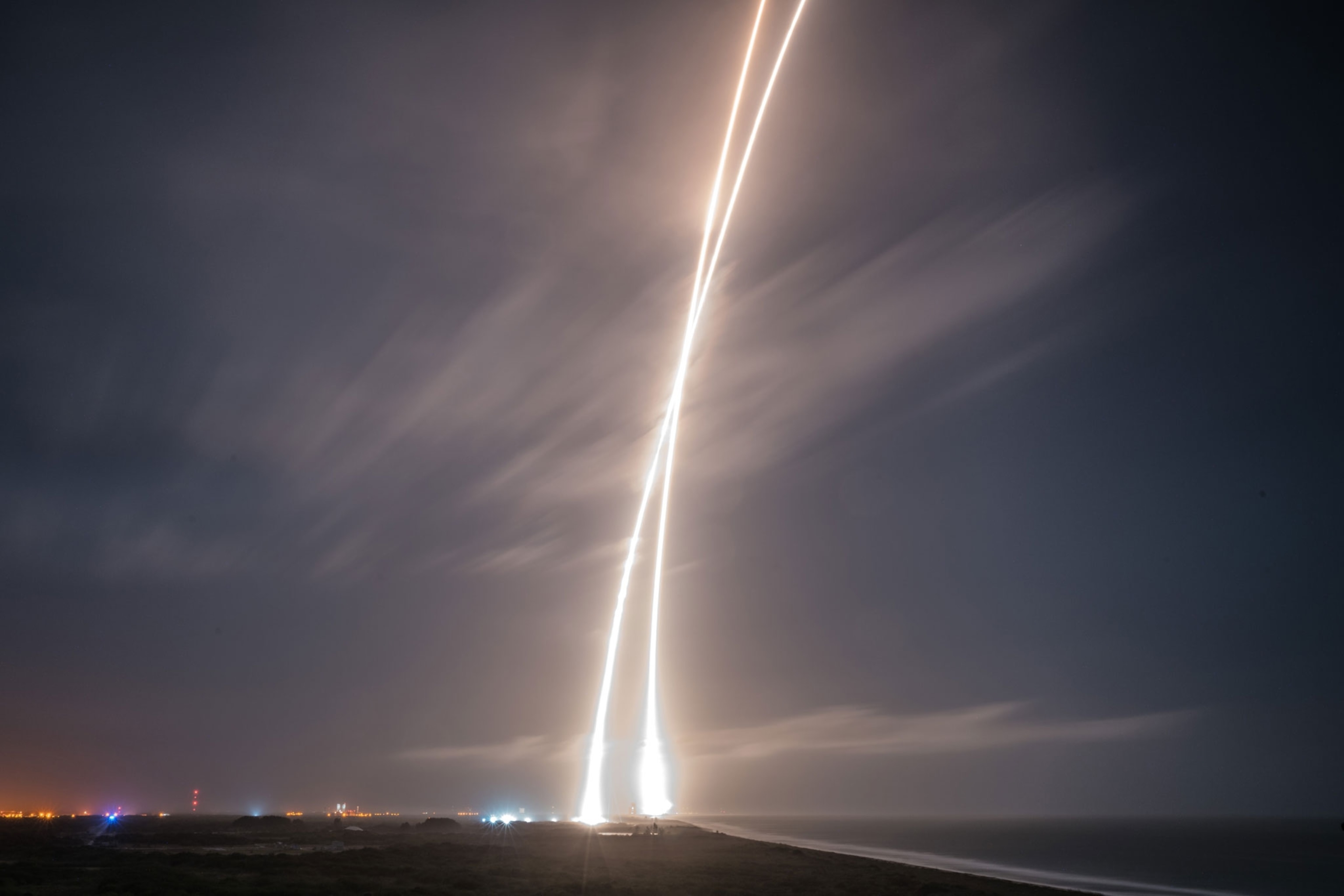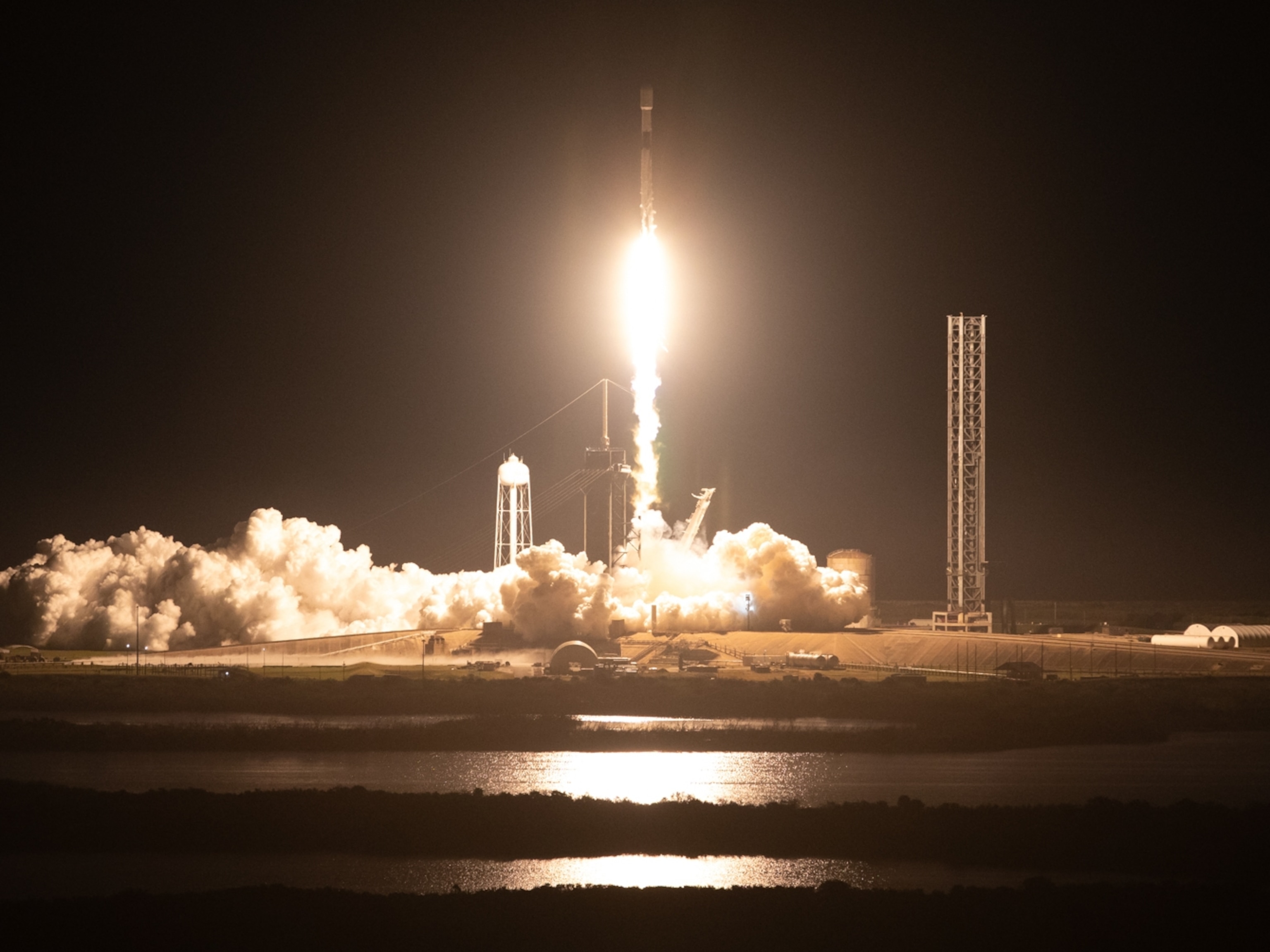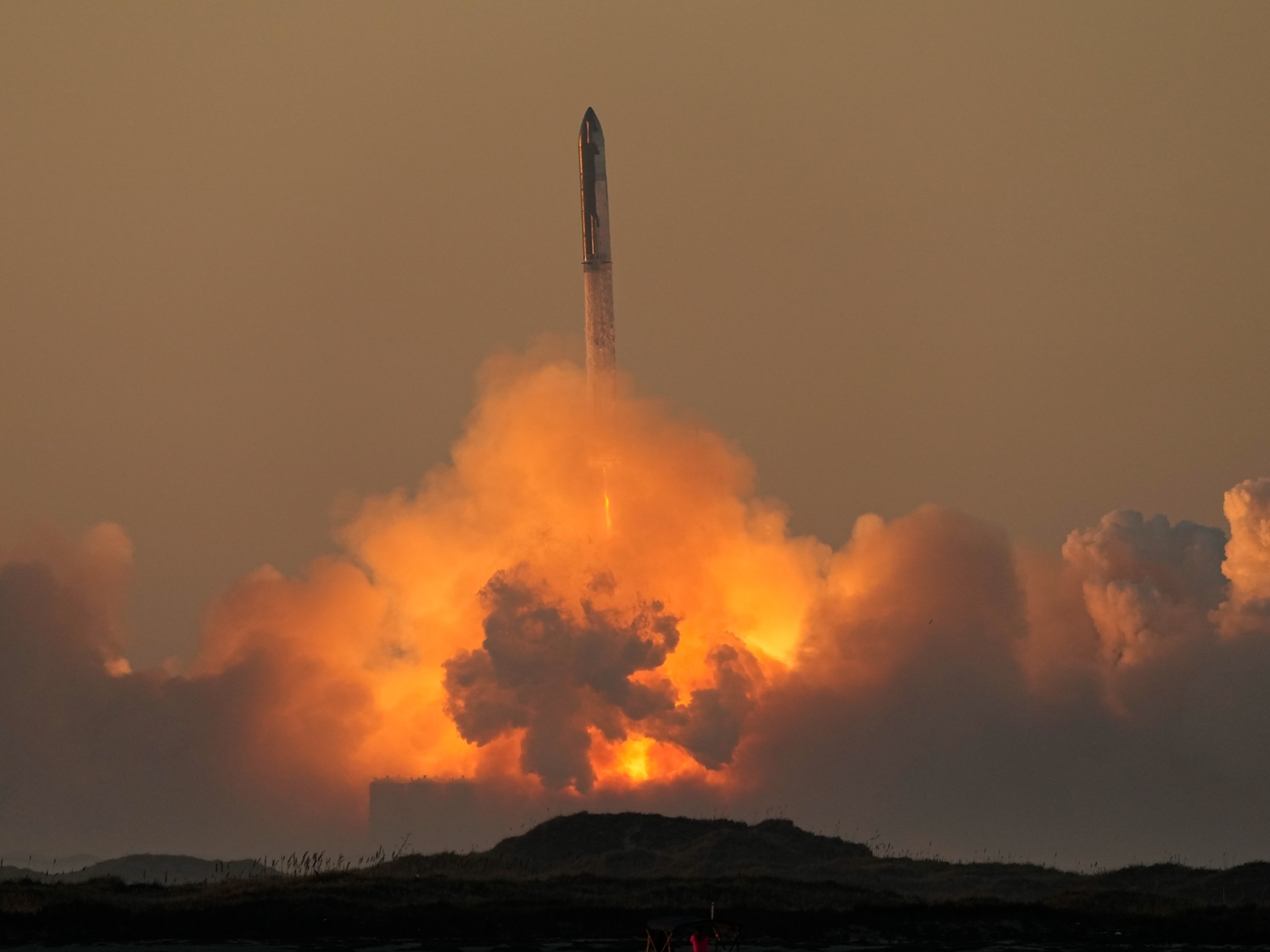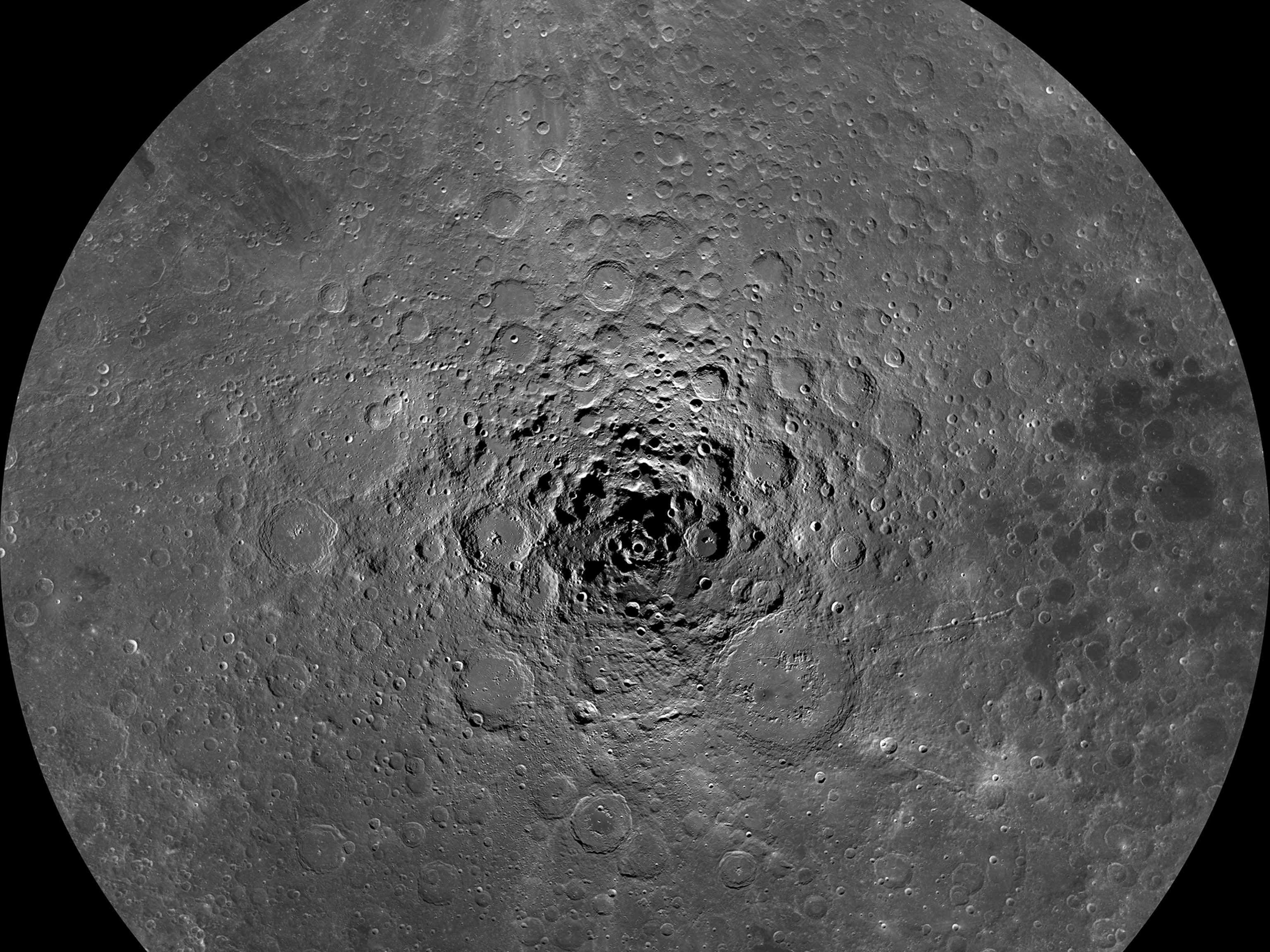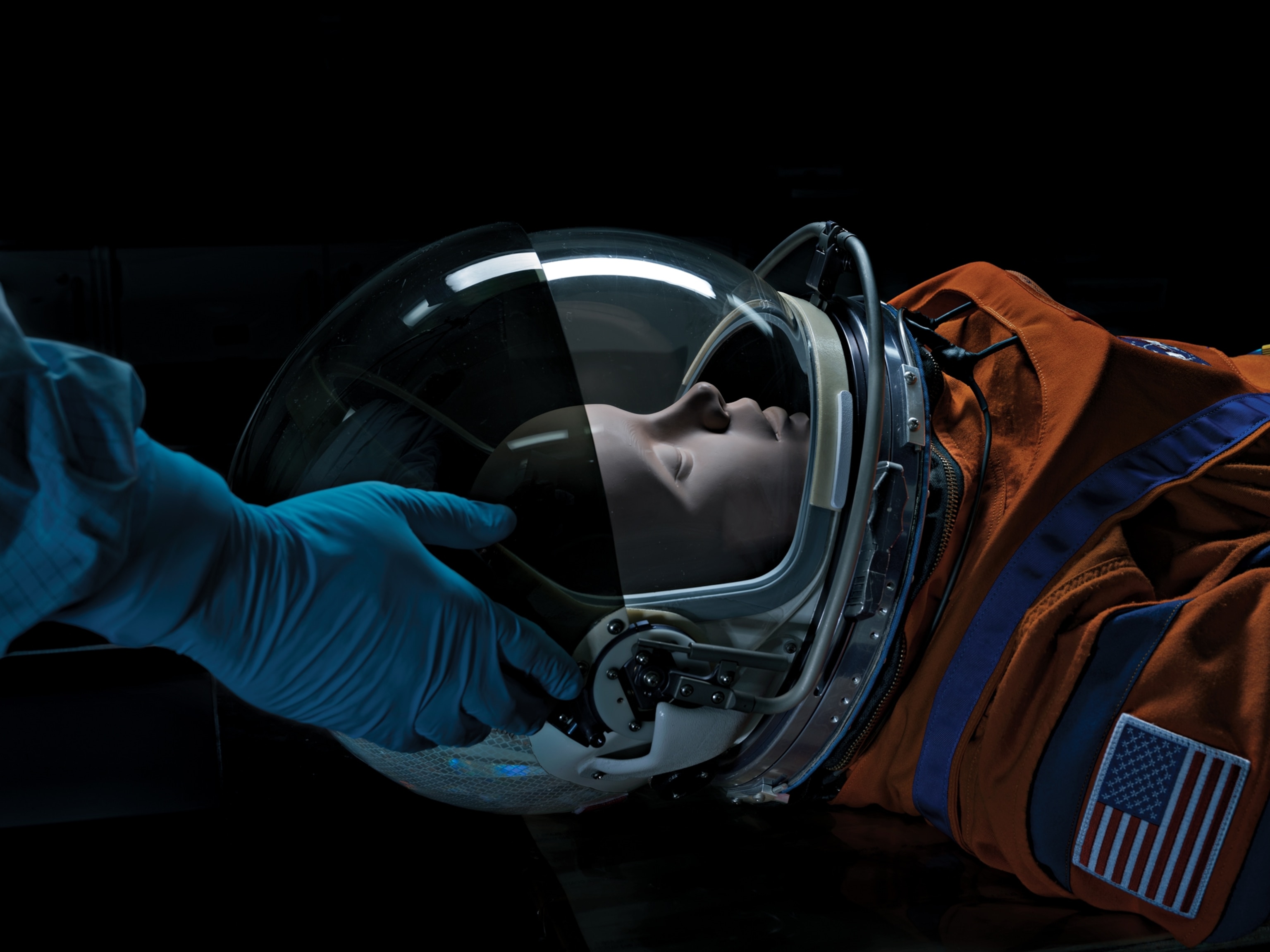In recent weeks, SpaceX CEO Elon Musk has been making headlines for flirting with libel lawsuits, getting his car company Tesla investigated by the U.S. Securities and Exchange Commission over a tweet, and smoking weed on-air. Now, the provocative tech titan has unveiled the latest endeavor related to his company’s adventures in rocketry.
In a Monday press conference at SpaceX headquarters in Hawthorne, California, Musk announced that Japanese billionaire Yusaku Maezawa has purchased the first ticket to lunar orbit aboard the company’s giant rocket, affectionately known as the BFR. The ticket price is undisclosed, but Musk says it would cover a "material percentage" of the estimated $5 billion necessary to build and develop the rocket.
Maezawa is a musician, fashion designer, entrepreneur, and art collector who believes that art has the power to bring world peace. That’s why, in a twist, he won’t be going to the moon alone: Maezawa plans to invite between six and eight artists to accompany him on the week-long journey, which SpaceX is tentatively scheduling for 2023.
“I want to share these experiences and things with as many people as possible. That is why I choose to go to the moon with artists!” Maezawa says. “There are so many artists with us today that I wish would create amazing works of art for humankind, for children of the next generation. And I wish very much that such artists could go to space, see the moon up close, and the Earth in full view, and create works that reflect their experience.”
He cited Beethoven's piano composition Moonlight Sonata, Van Gogh’s painting “Starry Night,” and The Beatle’s tune “Mr. Moonlight” as examples of transcendent art inspired by the moon. He then shared a short animation describing the art project, called Dear Moon, set to Debussy's “Clair de Lune.”
It's all a rather wonderful nod to Carl Sagan's novel Contact, in which astronomer Ellie Arroway, upon first experiencing the indescribable beauty of deep space, whispers: "They should have sent a poet."
But wait: What’s the BFR? And why do parts of this plan sound so familiar? We’ve got you covered.
So, yeah. What’s the BFR?
Like so many items in Musk’s inventory, this rocket has earned itself a somewhat loaded name. The company is going with the mundane Big Falcon Rocket, based on the name of the existing Falcon rockets in the SpaceX fleet—but the exact meaning of the “F” has been negotiable for a while.
Whatever you call it, Musk originally envisioned the BFR as the primary transport vehicle for Mars-bound Earthlings. With a first-stage booster that’s roughly 200 feet tall, 30 feet across, and with dozens of Raptor engines beneath it, the BFR would be legitimately quite large. It could send 150 tons into Earth’s orbit and thrust its partner spaceships (capable of carrying a hundred people) toward the smaller, redder planet next door.
In other words, it should be more than capable of reaching the moon, or cleaning up space junk, or ferrying people from one side of the planet to the other in about 30 minutes, all of which Musk says he’d like to do.
Didn’t SpaceX already announce a scheme for moon travel?
They did. In February 2017, the company said that an anonymous pair of space travelers had purchased tickets to the moon, on a flight that would see them loop around our natural satellite and then return home. It was supposed to happen in 2018, take about a week, and use the company’s Falcon Heavy rocket and Dragon crew capsule. At the time, the Falcon Heavy had yet to fly, although SpaceX has done a successful test launch since then.
Cool! Is it happening?
Nope. Musk later announced that the trip has been delayed pending production of the BFR—and said that as of now, there are no plans to certify the Falcon Heavy for human spaceflight. Meanwhile, the Dragon crew capsule is still being tested, and NASA is projecting a test flight with the first commercial crew in early 2019.
SpaceX Milestones in Pictures
OK. So how is this new plan different from the earlier one?
Well, when that first trip was announced, SpaceX kept the identity of the two travelers secret. This time, they have revealed who the passenger is and why that person wants to visit the moon. Aside from that, it’s still a flight around the moon using a rocket that doesn’t yet exist. And in place of the Dragon, the private passenger will be riding aboard the still-in-development Big Falcon Spaceship.
When might it happen?
SpaceX is projecting the trip will happen sometime in 2023. But given how long it takes them to design, build, test, and fly its rockets and crew capsules, we wouldn’t put our money on it happening any time soon. And for now, Musk and Maezawa are declining to say which artists may be under consideration for joining the billionaire on his journey. The world will have to wait for more details when SpaceX is ready to deliver them.





